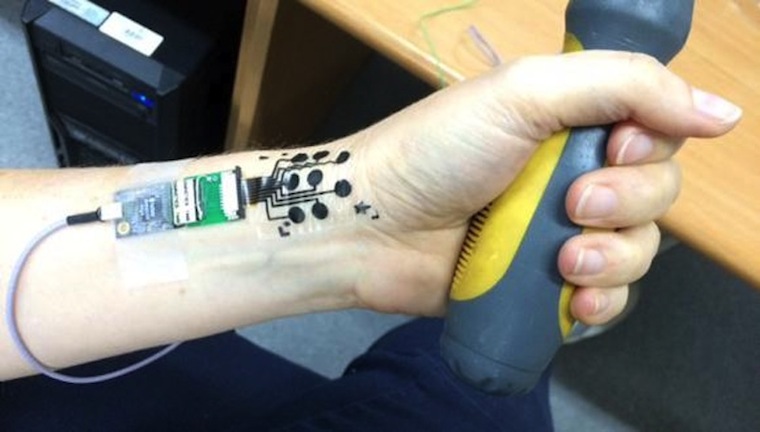It’s a temporary tattoo more advanced than anything you’ll ever find in a Cracker Jack box: Researchers have developed a thin, flexible electrode that can measure electrical signals on the skin after being applied like a temporary tattoo.
The technology was designed to make long-term, stable recordings of muscle activity without inconveniencing the person wearing it.
“The key innovation is making the electrodes extremely thin,” study leader Yael Hanein, an associate professor of electrical engineering at Tel Aviv University in Israel, told Live Science in an email. “This feature solved all the challenges in regular electrodes.”
The electronic tattoos could have a variety of applications, including to map emotions based on facial expressions, study neurodegenerative diseases and control prostheses, the researchers said in a statement. Hanein added that her lab is already exploring potential ways the tattoos could be used for psychological evaluations and as a diagnostic tool for Parkinson’s disease, a neurological disorder that can cause tremors, muscle stiffness and coordination problems.
The “electric tattoo” is made up of three main parts: a carbon electrode, an adhesive surface that fastens the tattoo to the skin and a polymer coating that can conduct electricity, Hanein said in the statement.
“The major benefits include long-term stability and comfort, and in addition, simple and quick application on the skin,” she said. However, “there is still more work to be done on the data capturing and analysis,” she added.
The new technology represents an exciting development, said Lisa Feldman Barrett, a psychologist who studies emotion at Northeastern University but wasn’t involved with the new study.
“Right now, we apply sensors to people’s skin with gel, and it’s messy,” Barrett told Live Science.
Even though she anticipates using this sort of technology in her own lab, Barrett said there are some things an electrode simply won’t be able to measure. “There are no technological advances of this sort that will ever let you read emotions in someone’s face. Emotions just don’t work like that,” she said.
According to Barrett, cross-cultural studies demonstrate that emotions aren’t universally linked to certain facial expressions, and context is crucial when we guess the feelings of those around us. “Emotions aren’t detected — they’re perceived,” she said.


